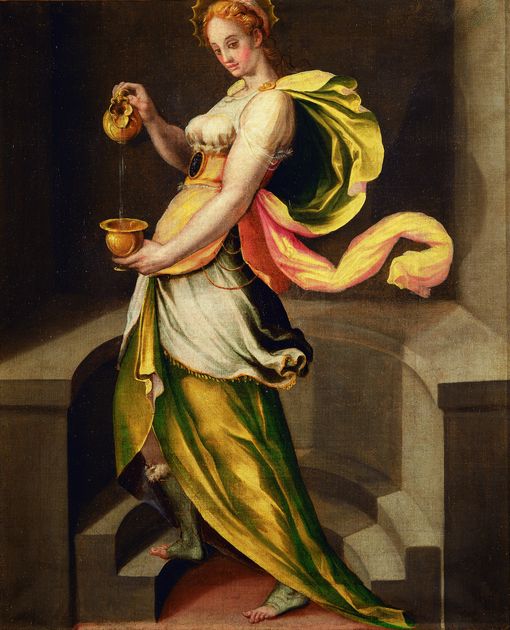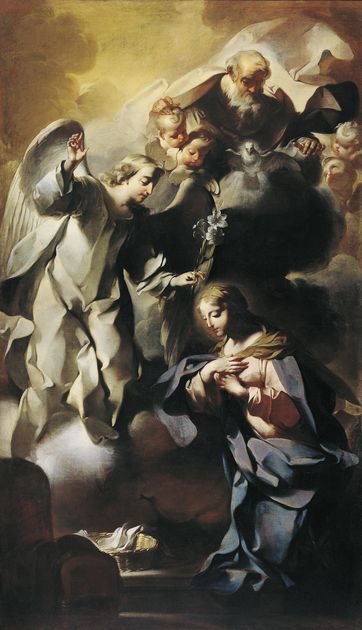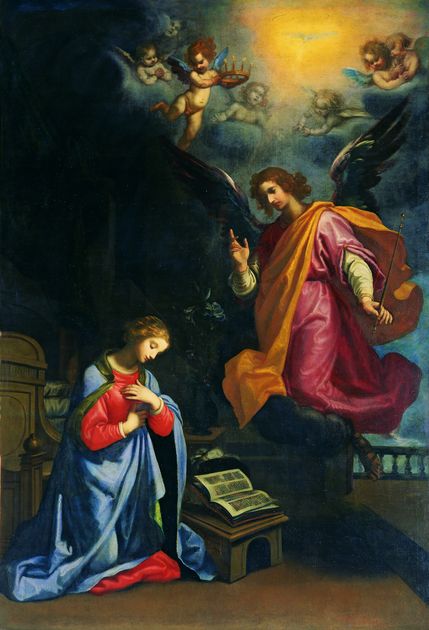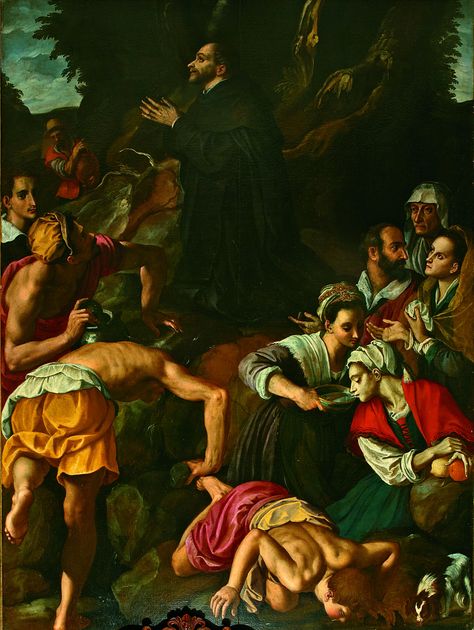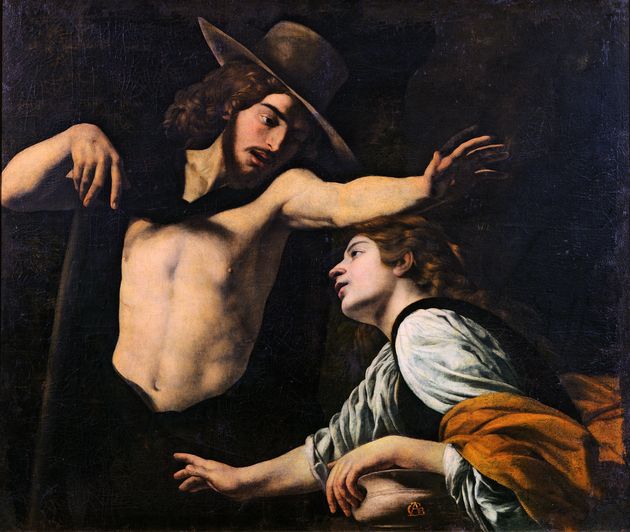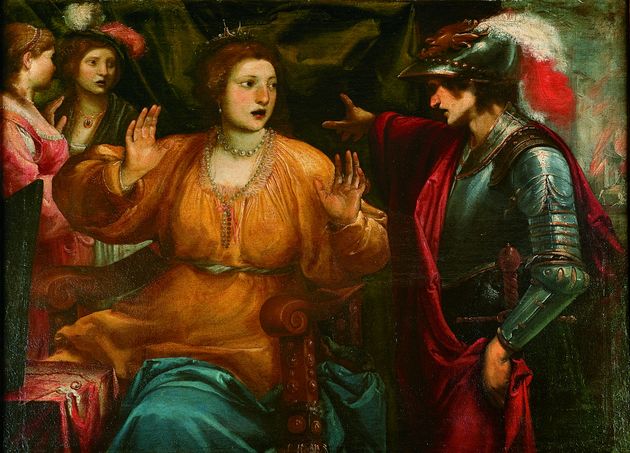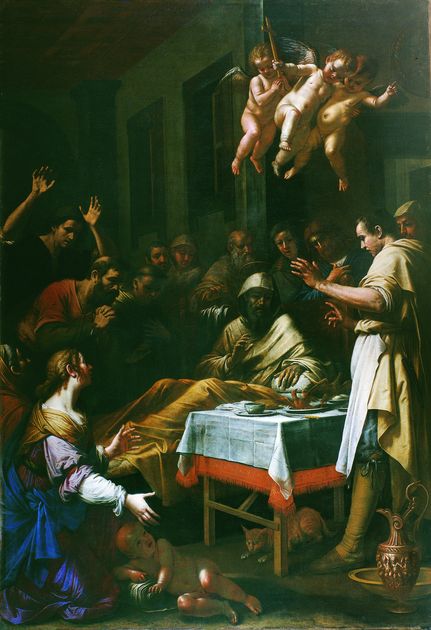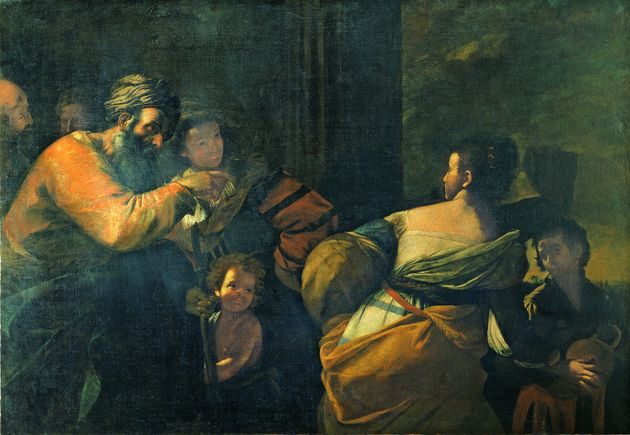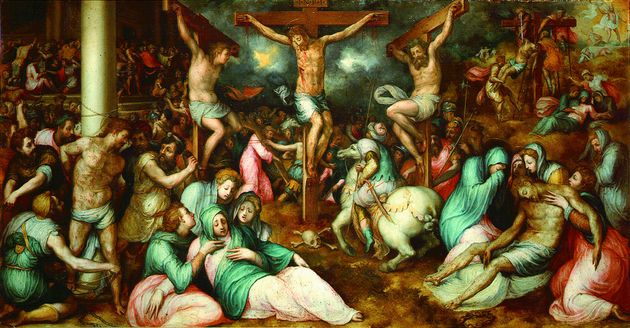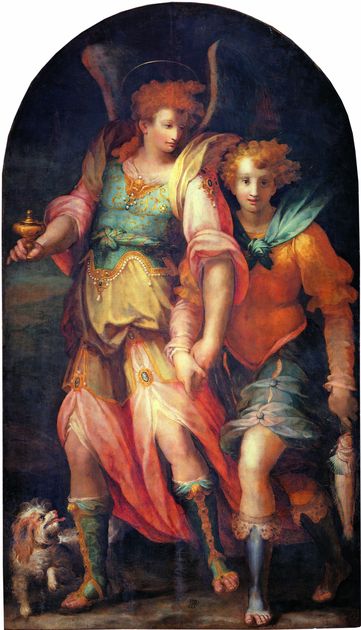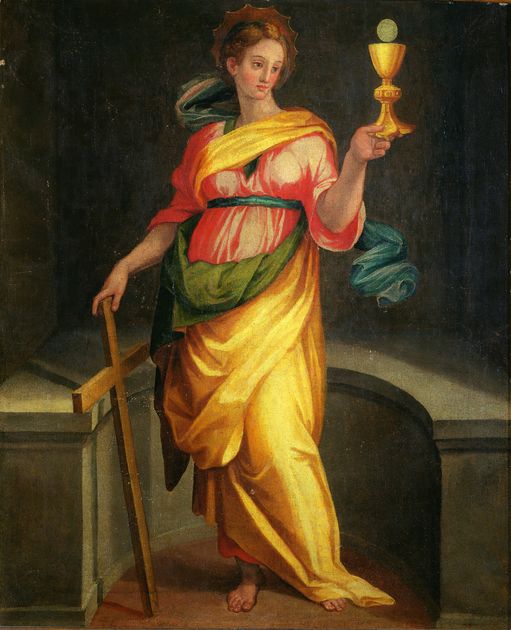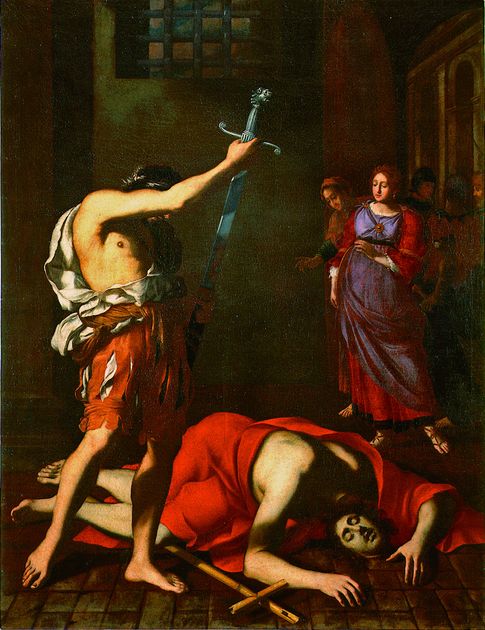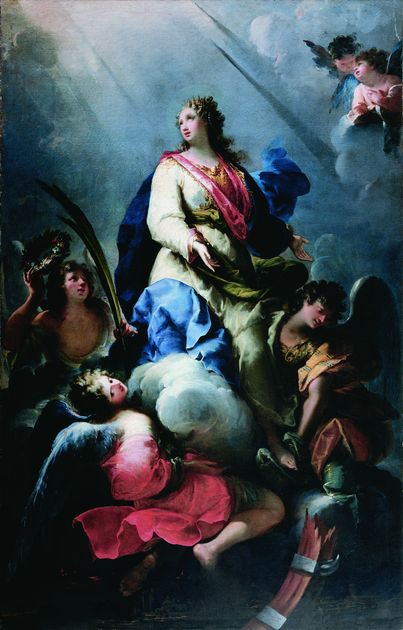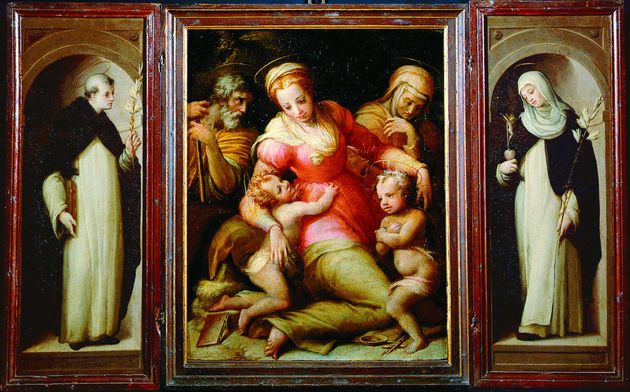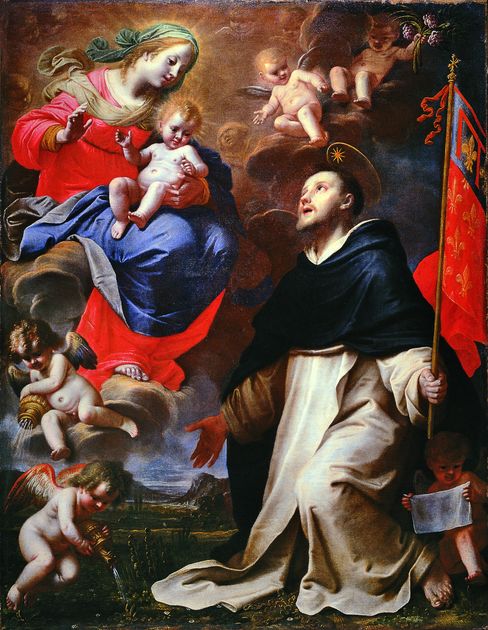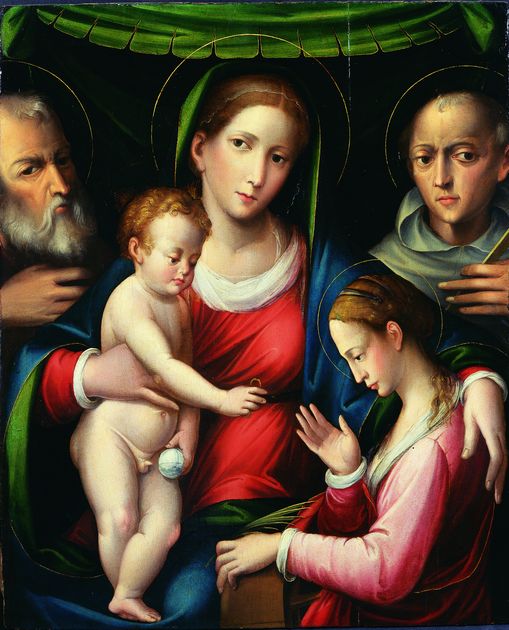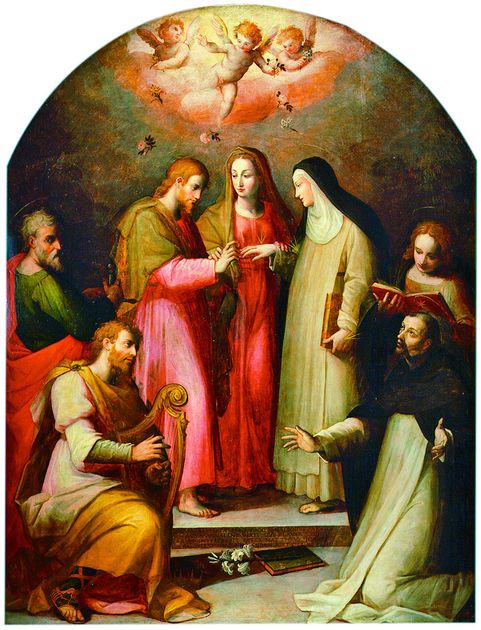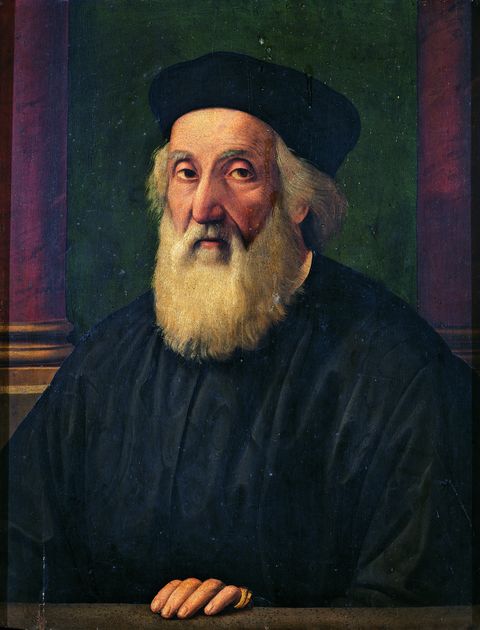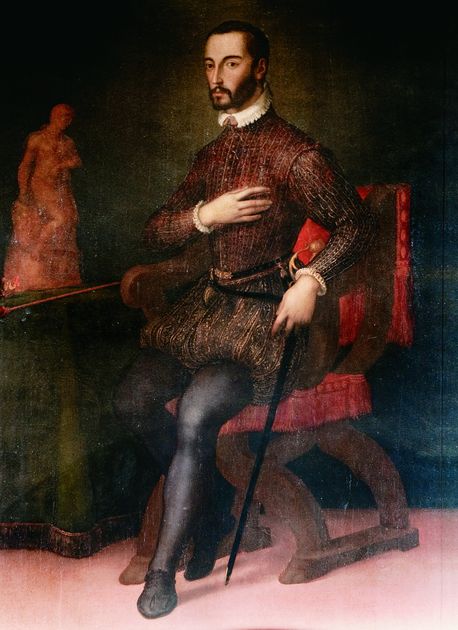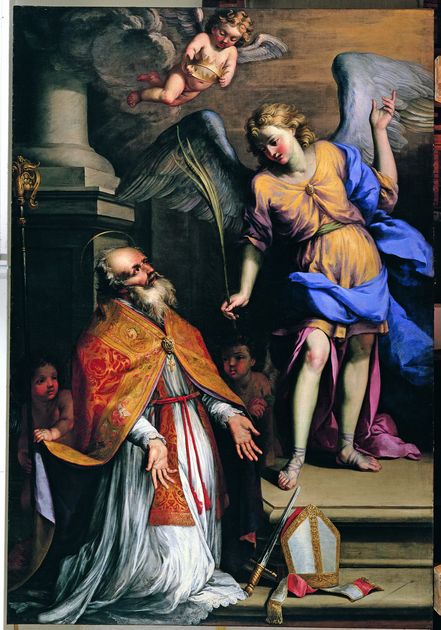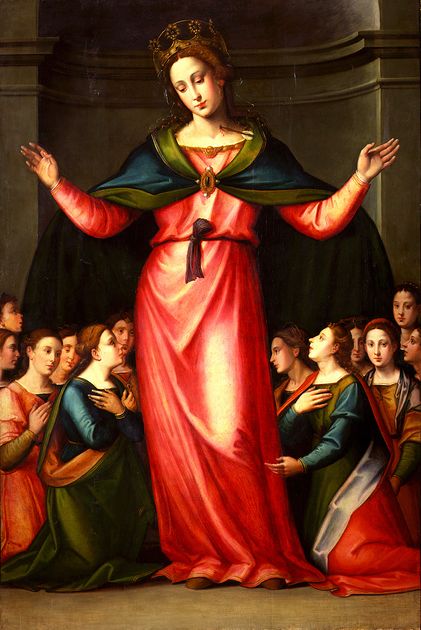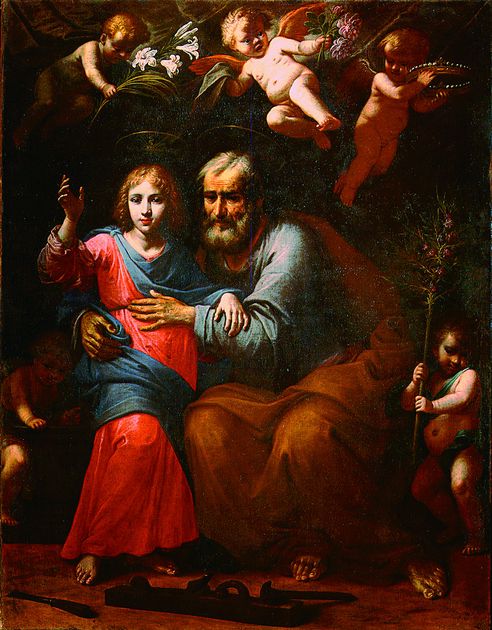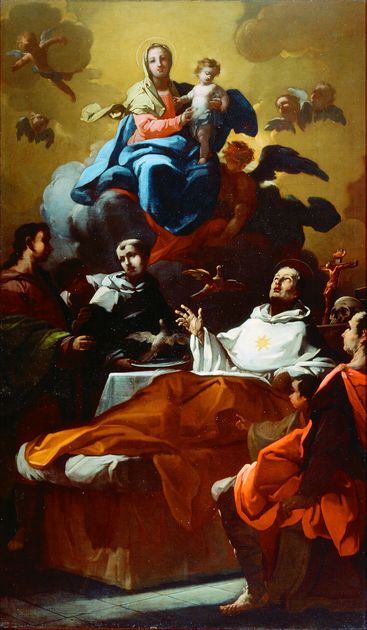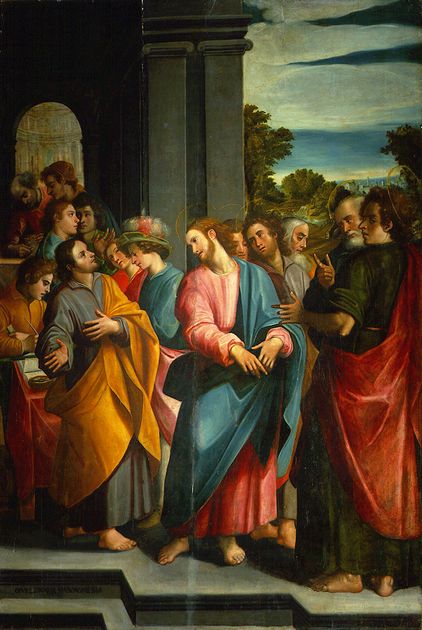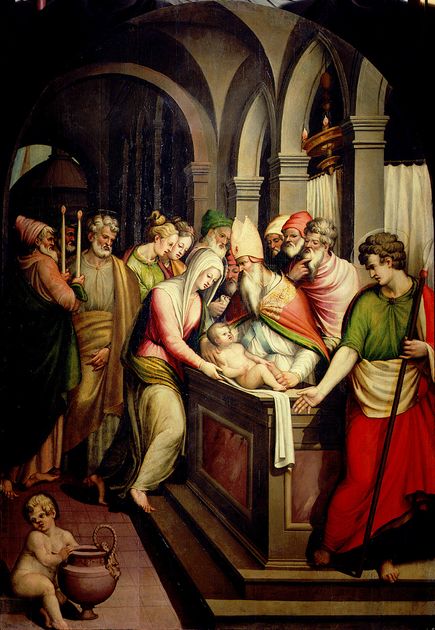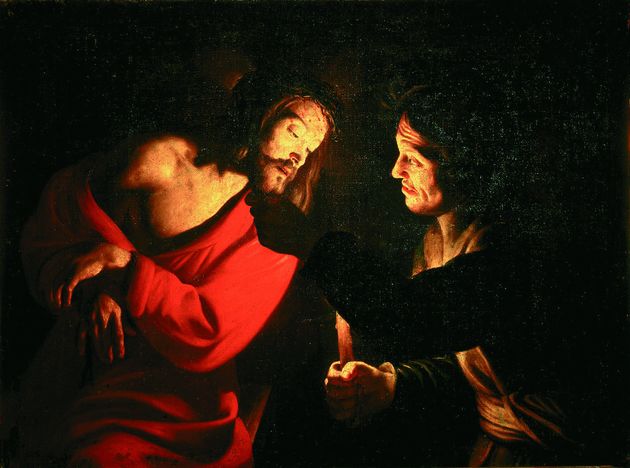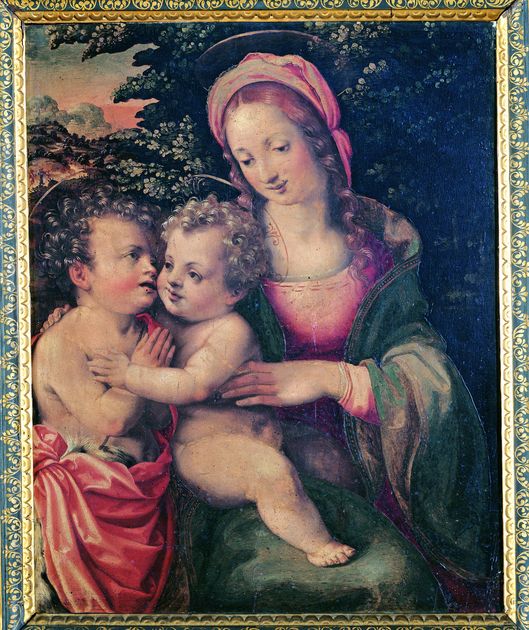The three Virtues are represented with their traditional attributes: Prudence with a mirror, referencing self-knowledge, firmly grasps a snake as Sacred Scripture urges us to be “prudent as serpents”, Faith is connoted by the Christian symbols of the cross, chalice and host, while Temperance holds a cup and jug in her hands, an allusion sometimes to the mixing of hot and cold water, others to the act of “tempering” water and wine to dampen the effects of intoxication. The allegories are inspired in clothing by classic models, in accordance with the custom of referring to the past and the fashion of the day. The uniform niche background underlines its statuary poses, made dynamic by its sinuous and sharp lines and cool and changing colours, dazzled by a strong light.
A long-time collaborator of Alessandro Allori, who, like him, had been a pupil of Bronzino, Butteri revived his style, later achieving, as these three works demonstrate, a greater stylisation of forms and a graphic insistence that he may have perfected when working on drawings for the Medici tapestry. Associated with the grand ducal court, he often painted ornaments and decorations for weddings or other celebrations, as is also shown by the beautiful coat of arms celebrating Ferdinando I de' Medici, from the Spedale della Misericordia e Dolce hospital, now on display in the mayor's chambers in the Town Hall.
Butteri also had other commissions in the Prato area: the altar piece depicting the Virgin Mary and Child with Saints, painted around 1586 in the Vaiano Abbey, which also houses a Crucifix by the artist, is well-known. He probably also provided the design for the refined Antependium of St. Stephen now in the Museo dell'Opera del Duomo, donated by Cardinal Alessandro de' Medici, the future Pope Leo XI, around 1590.

